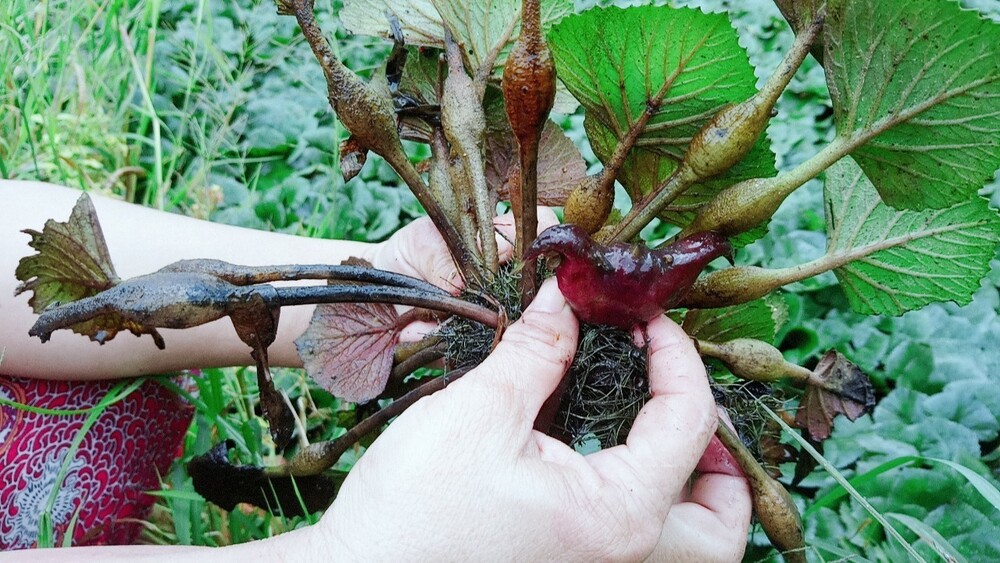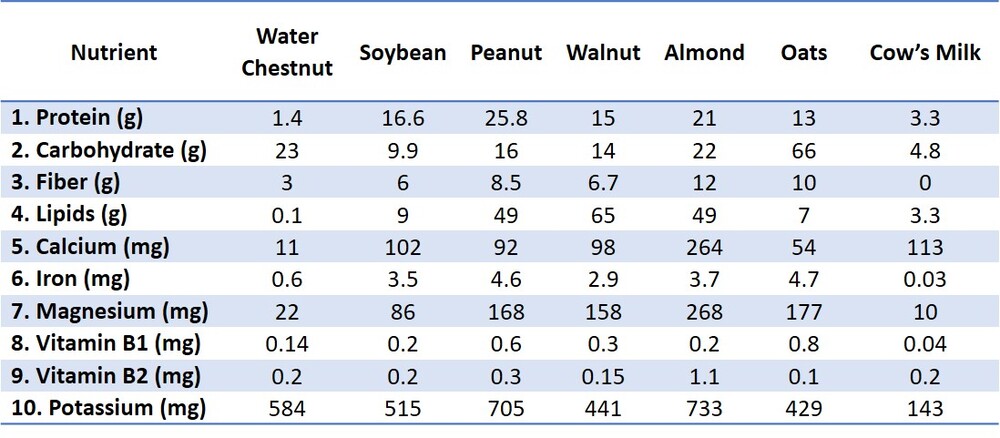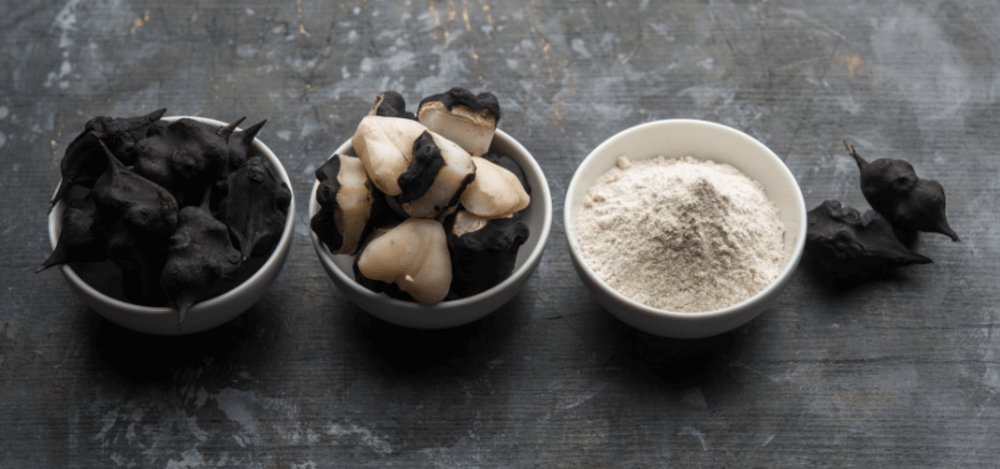Vietnam's Endemic Natural Compounds – Article 1
Water chestnut (Trapa spp.), an iconic aquatic plant of Dong Thap Province, possesses outstanding nutritional value and significant economic potential. However, its exploitation remains largely small-scale and lacks processing technology, preventing the product from maximizing its advantages. The strategy of applying food technology and developing specialized sports products opens opportunities to enhance value, expand markets, and transform water chestnuts into the "brown gold" of the Mekong Delta.

Figure 1. Water chestnut, an iconic aquatic plant of the Mekong Delta region
1. Current Geographic Distribution and Untapped Potential of Water Chestnuts in Dong Thap
Water chestnut (Trapa spp.), an aquatic plant characteristic of the Mekong Delta, is concentrated in Dong Thap Province with an estimated cultivation area of 500–700 ha/year, primarily in Thap Muoi, Tam Nong, and Cao Lanh districts. This region features suitable wetland ecosystems with a pH of 5.5–7.0 and high organic content (2.5–4.0%), creating ideal conditions for water chestnut growth. However, according to a 2022 report by the Dong Thap Department of Agriculture and Rural Development, only 30% of this area is systematically cultivated; the rest grows spontaneously, resulting in low yields (1.2–1.5 tons/ha) compared to optimal potential (2.5–3 tons/ha). Fragmented planning and a lack of post-harvest technology investments limit the economic value of water chestnuts, which are mainly consumed fresh or dried at 10,000–15,000 VND/kg—far below their nutritional worth and potential applications.
2. Economic Exploitation Incommensurate with Nutritional Value
Water chestnuts boast impressive nutritional content: 73% carbohydrates (primarily slow-digesting resistant starch), 3% fiber, 2% protein, and minerals such as calcium (45 mg/100g), phosphorus (120 mg/100g), and potassium (500 mg/100g). A 2021 study by the National Institute of Nutrition revealed that water chestnuts contain polyphenol compounds (15–20 mg GAE/g) with antioxidant properties, supporting inflammation reduction and blood sugar stabilization. However, exploitation remains limited to household-scale production without value-added chains. An estimated 85% of Dong Thap’s output is sold raw, while deep-processed products like water chestnut powder, modified starch, or polyphenol extracts account for only 5–7%, despite yielding 3–5 times higher value (40,000–80,000 VND/kg). Key constraints include limited preservation technology (post-harvest losses of 25–30%) and weak farmer-processor linkages.
3. Applying Food Technology to Enhance Economic Value
To optimize potential, water chestnuts must integrate into high-tech processes. First, lyophilization (freeze-drying) preserves cellular structure and bioactivity, yielding nutrient-rich powder (moisture <5%, shelf life up to 24 months) [1]. Second, amylase enzyme hydrolysis converts starch into maltodextrin (DE 10–15) for sports beverages [2]. Trials at Can Tho University (2023) showed that enzyme-treated water chestnut starch has a glycemic index (GI) of 35–40—50% lower than rice starch—making it suitable for diabetics and athletes. Third, extrusion technology transforms water chestnuts into fiber-rich snacks aligned with clean food trends. A circular economy model should also be adopted: processing residues can be used as livestock feed (crude protein 8–10%) or compost, improving resource efficiency [3].
4. Development Strategy for Specialized Sports Nutrition Products
With 70–75% complex carbohydrates, water chestnuts are an ideal energy source for athletes, aiding muscle glycogen maintenance and fatigue reduction. Research by the International Society of Sports Nutrition (ISSN, 2022) recommends 30–60g of carbohydrates per hour during high-intensity training, matching the content in 100g of water chestnut powder (73g). For optimization, water chestnuts should be combined with whey protein or BCAA (3:1 ratio) in energy bars or gels to ensure energy balance and muscle recovery. Additionally, high potassium levels (500 mg/100g) support electrolyte balance and reduce cramping—common issues among marathon athletes. We propose building the "Athlete’s Water Chestnut" brand through local enterprise-research institute partnerships, alongside microencapsulation technology to stabilize polyphenols in supplements [4]. This model could elevate water chestnut value to 150,000–200,000 VND/kg (processed) and expand export markets, potentially reaching USD 20–30 million/year with strategic investment.
5. Benefits of Water Chestnut Milk and Why It Is the Optimal Choice for Professional Athletes Compared to Other Animal or Plant-Based Protein Sources:
Below is a comparison table of 10 sports-beneficial nutrients in water chestnuts versus other foods (per 100g, approximate data) [5]:
Table 1. Nutritional Comparison of Water Chestnuts, Other Plants, and Cow’s Milk

i. Sustainable Energy Supply and Balanced Nutrition
Water chestnut milk is rich in complex carbohydrates (resistant starch) with a low glycemic index, ensuring steady energy release and preventing blood sugar spikes/crashes. This is critical for endurance sports like marathon running and cycling. Additionally, its potassium, magnesium, and B vitamins support energy metabolism, electrolyte balance, and cramp prevention.
ii. Anti-inflammatory and Muscle Recovery Properties
Water chestnuts contain antioxidants like polyphenols and flavonoids, reducing oxidative stress from intense training. Their natural anti-inflammatory properties accelerate muscle recovery, decrease post-exercise soreness, and boost athletes’ immunity.
iii. Digestive-Friendly and Low Allergenicity
Unlike animal milk (lactose) or soy/almond proteins (high allergy risk), water chestnut milk is gluten-free, lactose-free, and hypoallergenic. It is easily digestible, suitable for sensitive individuals, and minimizes bloating/discomfort during competitions.
iv. Hydration and Electrolyte Balance Support
With high natural water content (~70–80%) and minerals like potassium, water chestnuts efficiently replenish fluids and electrolytes post-sweating. This surpasses animal milks or dense plant proteins, which focus on protein but neglect hydration.
v. Sustainability and Eco-Friendliness
As an aquatic crop, water chestnuts require less water and fertilizer than other protein sources (soybeans, almonds) or dairy farming. Their milk production generates low carbon emissions, aligning with modern athletes’ green consumption trends.
6. Processing Technology, Product Applications, and Value Proposition
Applying freeze-drying and spray-drying technologies to produce water chestnut sports milk offers superior economic and nutritional efficiency. Lyophilization preserves cellular structure, polyphenol activity (15–20 mg GAE/g), and B vitamins, creating low-moisture powder (<5%) with a 24-month shelf life—ideal for gels or energy bars. Spray drying converts liquid milk into fine, soluble powder, optimizing the production of sports drinks rich in complex carbohydrates (73g/100g) and potassium (584 mg/100g). Economically, this technology reduces post-harvest losses (from 30% to 5%) and raises product value to 150,000–200,000 VND/kg—10–15 times higher than raw sales. Target markets include athletes needing sustained energy and eco-conscious consumers, with projected revenue of USD 20–30 million/year through export expansion. Investing in technology combined with building the "Athlete’s Water Chestnut" brand will position it as a premium product, driving sustainable development in the Mekong Delta.

Figure 2. Freeze-dried water chestnut powder – an optimal ingredient for sports nutrition plant-based milk
References
- Nguyen Thi Lan (2020). "Application of Freeze-Drying Technology in Agricultural Processing". Food Technology Journal, Vol. 12.
- Tran Van Hai et al. (2021). "Optimizing Starch Hydrolysis Process Using Amylase Enzymes". National Biotechnology Conference Proceedings.
- Global Sports Nutrition Market Report (2022). "Trends in Plant-Based Sports Nutrition Consumption". NielsenIQ.
- Pham Thi Mai (2019). "Circular Economy in Agriculture: Reusing Processing By-Products". Agriculture Publishing House.
- Smith, J. & Green, T. (2020). "Polyphenols and Their Antioxidant Role in Sports Nutrition". International Journal of Applied Nutrition, Vol. 45.
Series on Vietnam’s valuable natural compounds with potential applications in food technology, pharmacology, and medicine. Authored by the Faculty of Engineering and Technology – Van Hien University.
Dr. Doan Van Thuan